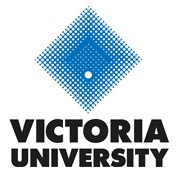Brief description
Project investigates the feasibility of using pasteurisation rather than UV and free chrlorination disinfection processes for the production of Class A water from unfiltered secondary effluent. Data are presented in two spreadsheets: laboratory-scale testing data and pilot plant trial data.
The laboratory data spreadsheet records the effect of temperature and contact time, water type (treatment pond), and organism strains (laboratory and isolates from wastewater). Target pathogens are E.coli, enterococci, FRNA bacteriophage, cryptosporidium, giardia, adenovirus, coxsackievirus and ascaris. Log Reduction Values (LRVs) are reported. The test water’s pH, turbidity, ammonia concentration, nitrate and nitrite concentration, phosphate concentration, total Kjeldahl nitrogen (TKN), dissolved organic carbon (DOC), total organic carbon (TOC), biological oxygen demand (BOD), chemical oxygen demand (COD), electrical conductivity (EC), total dissolved solids (TDS), suspended solids (SS) and volatile suspended solids (VSS) were recorded.
The pilot plant trial data spreadsheet records temperature, flow rates and contact time during MS2 challenge tests. MS2 coliphage and native E.coli concentrations are recorded. LRVs are reported. The test water’s pH, turbidity, EC, soluble calcium, COD, TOC, SS, VSS, and ultraviolet transmittance (UVT) on the challenge test days were also recorded.
The pilot plant trial was conducted at Melbourne's Eastern Treatment Plant.
The following were project partners: Judy Blackbeard (Melbourne Water), Paul Monis (AWQC, South Australia Water), Andrew Salveson (Carollo Engineers USA), Greg Ryan (Pasteurization Technology Group), and Glen Miller (WJP Solutions)
Issued: 01 07 2016
Data time period: May 2013 to June 2015
text: Melbourne Water's Western Treatment Plant
User Contributed Tags
Login to tag this record with meaningful keywords to make it easier to discover


